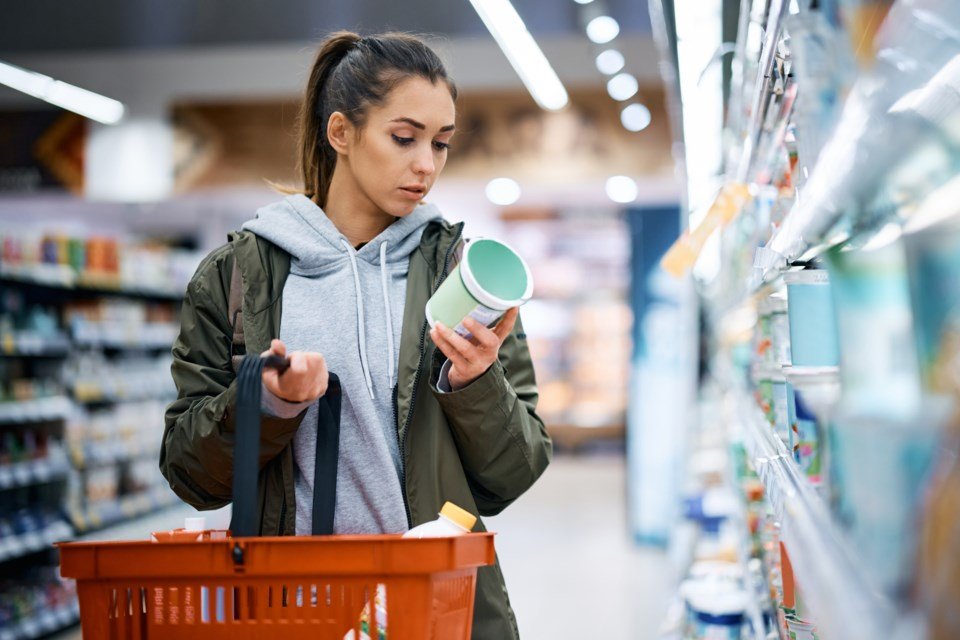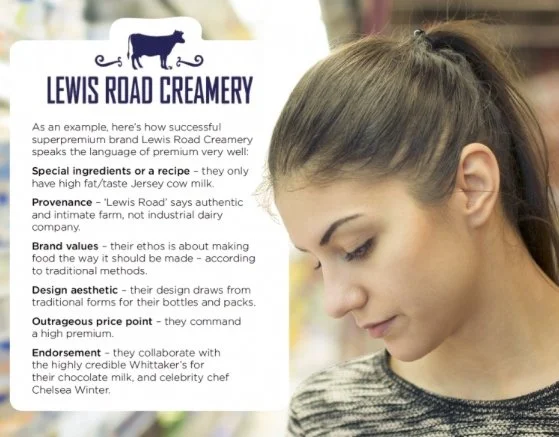Superpremiumisation
Superpremiumisation. Once you get over how to say it, you will start to see it all through the supermarket.
It is the trend to very highly-priced products appearing where reasonably priced staples have traditionally dominated. In the humble milk category, you can buy a litre of Countdown milk for $2.51, or a litre of Lewis Road for $5.20. 2 litres of Tip Top ice cream will cost you $6.95, while only 480 ml of Wahiki ice cream will cost $9.49. 1 litre of Fresh n’ Fruity yoghurt will cost you $4.30, but only 500 ml of Raglan coconut yoghurt will cost you $8.55. A 750g pack of Homebrand muesli costs $5.2, whereas a 400g pack of Pure Delish will set you back $18.00.
Supermarkets love the added value and margin that superpremiumisation delivers. For shoppers, superpremiumisation provides a basis of differentiation to satisfy different shopper segments. When you look down the supermarket aisles you will see different kinds of shoppers who are shopping in quite different ways.
In an earlier research study we identified three main types of supermarket shoppers.
1. Speed shoppers
They are driven by convenience. They are functional shoppers who get through their shopping swiftly and efficiently. They value knowing exactly where everything is laid out. They hate being slowed down in queues.
2. Impulsive shoppers
They are driven by pleasure. They see shopping as an enjoyable adventure to take time over, they love to indulge in treats, and they love to explore and discover delicious new foods in store.
3. Prudent shoppers
They are driven by a sense of control. They look for savings, they are very habitual, they stick to their shopping lists, they buy what they need and they take pride in their budgeting.
Superpremiumisation is heaven for Impulsive shoppers especially, who love more extreme statements
in quality.
Speed shoppers might also choose superpremium products, but Prudent shoppers will turn their noses up at them. For superpremiumisation to work the product needs to speak the language of premium in order to justify its position. This can be achieved in several ways:
Special ingredients or a recipe – that say delicious, special, rare, or exotic.
Provenance – coming from a place known for its quality, expertise, or perfect growing conditions.
Brand values – giving the product desirable traits such as authenticity, hand-made, or made for foodies.
Design aesthetic – looking contemporary, or expressing delicious food values.
Outrageous price point – just being expensive can imply a specialness or superior quality.
Endorsement – carrying the recommendation of a trusted source.
So, the Impulsive shopper in us can look forward to more delicious temptations in store. So long as we don’t mind paying for quality.


